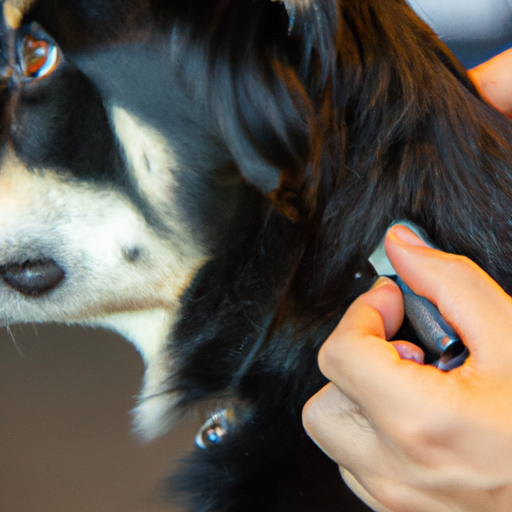As a responsible and loving caregiver, you want to take every possible measure to ensure the safety and wellbeing of your furry friend. One such precaution is microchipping your dog. But where exactly are these microchips placed in dogs? Let’s delve deeper into this topic.
H2: What is a Microchip?
A microchip is a small, electronic chip enclosed in a glass cylinder, about the size of a grain of rice. It carries a unique identification number, and when scanned by a vet or shelter, it links to your contact information.
H2: Where are Microchips Placed?
Microchips are typically implanted under the skin, between the shoulder blades at the back of your dog’s neck. This location is chosen because:
- It’s a relatively painless area for the implant
- It’s a place where the chip is less likely to move around
H2: How are Microchips Implanted?
Microchips are implanted using a sterile needle and syringe, similar to a vaccination shot. Here is a simplified process:
- The vet will lift the skin between your dog’s shoulder blades
- They will insert the needle and release the microchip
- The microchip will stay in place and should not move around
H2: What Information is Stored on a Microchip?
The microchip stores a unique identification number. This number, when scanned, is linked to your contact information in the microchip database. It’s important to remember:
- The microchip is not a GPS and can’t track your pet’s location
- The chip must be scanned with a compatible scanner to retrieve the information
| Information | Stored on Microchip |
|---|---|
| Unique ID | Yes |
| Owner’s Contact Info | No (linked in the database) |
| GPS Coordinates | No |
H2: What are the Benefits of Microchipping?
Microchipping your dog can be a lifesaver in case your pet goes missing. Here’s why:
- Microchipped dogs are significantly more likely to be reunited with their families
- Microchips last a lifetime, unlike collars or tags that can break or fall off
- It’s a safe and relatively painless procedure
Frequently Asked Questions
Q: Is microchipping painful for my dog?
A: The process is similar to a vaccination shot and is usually over quickly.
Q: Can microchips move from the original location?
A: It’s rare, but there have been cases of microchip migration in dogs.
Q: Is it necessary to microchip my dog?
A: While it’s not a legal requirement everywhere, it is highly recommended for the safety and wellbeing of your pet.
Q: Can I track my dog with the microchip?
A: No, the microchip is not a GPS and doesn’t have tracking capabilities. It only stores a unique identification number.
In conclusion, as a dedicated caregiver, the safety and wellbeing of your pet should be a priority. Microchipping is a simple and effective way to ensure this, acting as an insurance policy for when you need it most.



